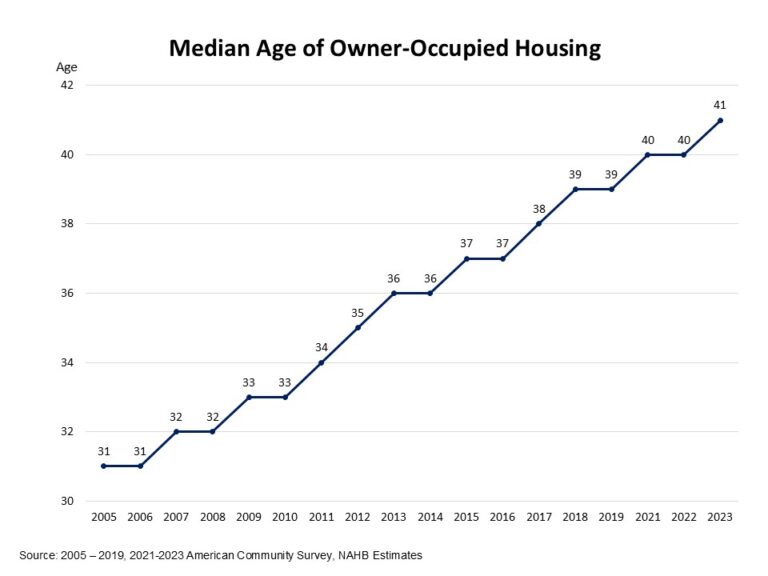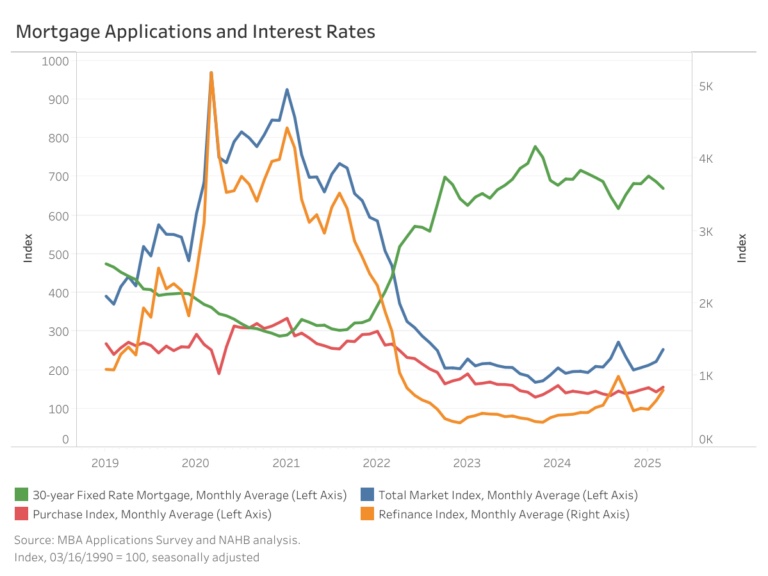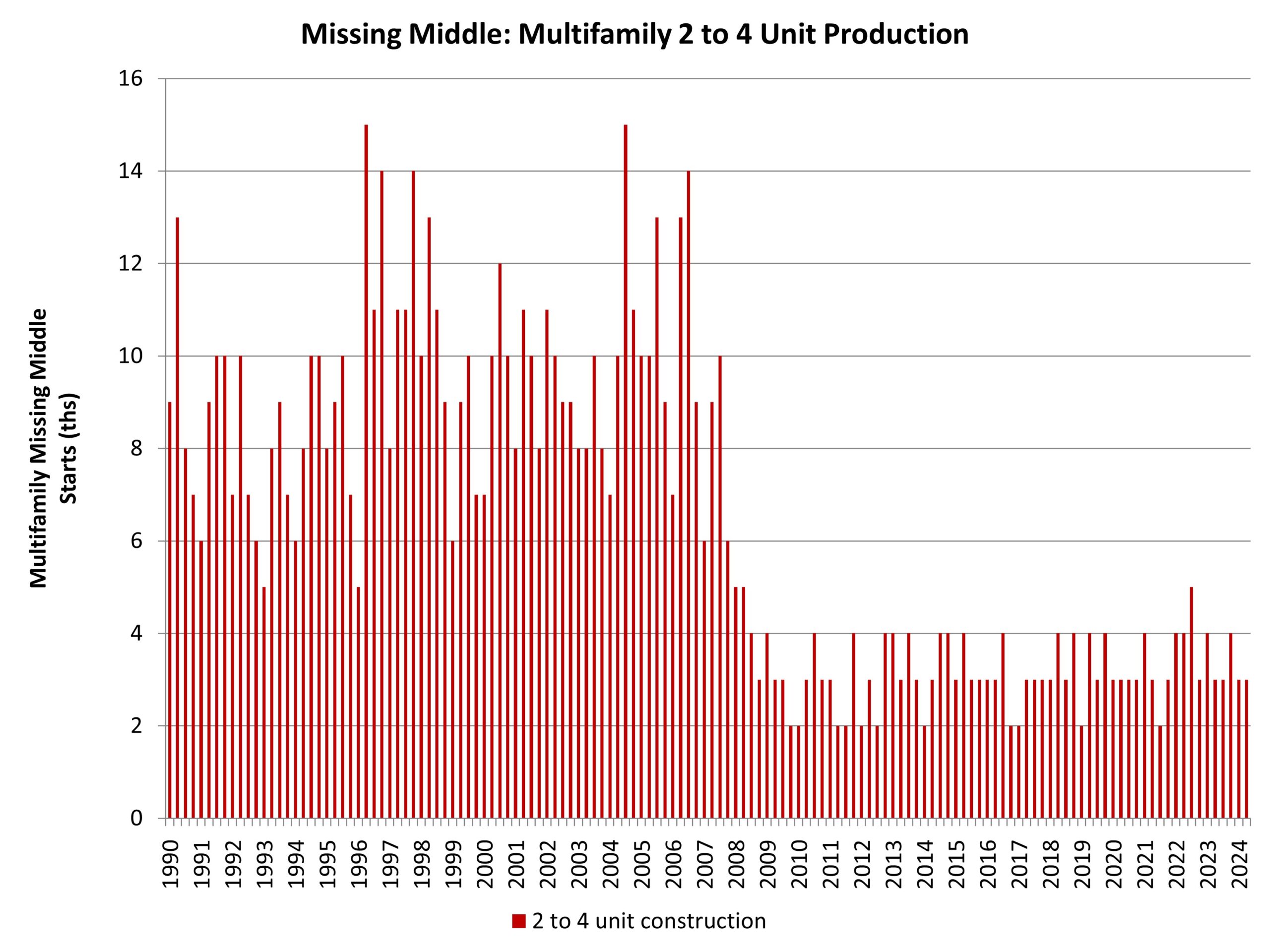Dave:
Just buy one house. That’s really all it takes to start your real estate investing journey and potentially change your entire life. Today’s guest bought her first home with just $4,000 in cash, and she lived there with roommates to offset her mortgage costs. Then within five years, she had acquired a 10 unit apartment building and had left her teaching job to pursue real estate full-time. What’s up everyone? It’s Dave Meyer, head of Real Estate Investing here at BiggerPockets, and today on the BiggerPockets podcast we have an investor story featuring Deandra McDonald. Deandra is going to tell us about her real estate investing career in central Virginia, which started with just a single $85,000 house and has grown steadily into a truly life-changing portfolio. We’re going to talk about the steps she took to get her finances in order after she got a hard no from the first lender. She approached how she leveled up to larger properties by converting a motel and why she’s not actually looking to grow her portfolio any larger than its current size. This conversation is, to me at least a great example of the persistence patients it takes to build a great real estate portfolio and how your first step towards financial freedom is often the most important one. Let’s bring on Deandra Deandra. Welcome to the BiggerPockets podcast. Thanks so much
Deandra:
For being here. Absolutely. This is really, really exciting. As someone who for their first property 12 years ago signed up for BiggerPockets, hoping to learn this full circle moment is truly crazy.
Dave:
Was that what, 2013 you got started, so what were you doing back then?
Deandra:
Probably about 2014. Oh, I was dreaming. This is what I was doing. I said, well, let me get ahead of the game. I’m ready to buy a house tomorrow. Let me get on this platform. So I could learn was subsequently shut down by my lender. Like, Hey, you are in no way qualified to buy property. So I was still on BiggerPockets. I said, well, I’m still going to read the books and I’m still going to read the forms as much as I can as I prepped to be an investor, maybe a year or two from them.
Dave:
Oh wow. So how far in the process did you get before content to a lender?
Deandra:
All I had truly was a dream. I think I had finished maybe as I was closing, rich Dad, poor Dad for the first time. I said, understood, I will do it. I’m ready to go next day. Call the lender, big fan of talking to professionals who are being paid by somebody else. I can’t get enough of it. I am going to get up immediately. That lender is being paid by the bank, right? That’s why they sit in that seat. So I’m happy to go talk to them because they don’t get paid based on me closing and I set for BiggerPockets because it didn’t even cross my mind that they would say no. I was like, oh, it might not be a high amount. Right. It might not be extensive, but they’re not going to say no, they’re just going to say a little less.
Dave:
They said no. Yeah. So do you mind sharing with us why they said no? Why the just hard
Deandra:
No, it was a no for so many reasons, and sometimes people like, oh, it was a conditional, this was not a conditional if you just do these things. It was a no, it was a no because I did not have a full-time job. I had just graduated college. I had not gotten a job in my field quite yet, and I was stringing together a bunch of part-time gigs. So my income was just too low. It was a no because my debt was too high. When I graduated, my net worth was super negative. I owned no assets. I had a car that I was underwater on because I rolled all the fees into the loan and I had student loan
Speaker 3:
Debt.
Deandra:
So I came out of college negative $35,000, negative $40,000. That also should lead you to know my credit wasn’t great. So I mean every single part of the application, I didn’t have the money. I didn’t have the savings. I had terrible credit. I had a low net worth. There was nothing she could do. There was no small tweak, which meant the overall answer was no. But I am lucky because she did give me like, this is what you need to do if you want to get qualified.
Dave:
I think that is a really commonplace for people to start just so having a negative net worth is actually pretty common, especially if you have student loans or car debt or something like that can, if you have positive cashflow, if you’re saving a lot more money than you’re spending every single month, you could still get started in real estate. But if you don’t have either, that’s a tough spot. It sounds like that’s where you were, where didn’t have a positive savings rate or a positive net worth, and that means you sort of have to take a step back and build sort of a stronger financial foundation before you can take out a loan. So how did you go about that? What did they tell you you needed to do and how long did it take?
Deandra:
It took two years. It took two years of continuously buying those BiggerPockets books, so keeping it fresh in my brain. I mean, truly,
I have to read this because I have to feel like there is something worth fighting for because this is really hard. It’s not just like, oh, I didn’t get a job just because I wasn’t getting a job. I wasn’t as qualified as the other applicants, for example. And so for one of the things I had to fix being my income, that was really difficult. It still took me, after I applied, it took me another four months to get my first full-time salary job, and even that wasn’t enough for the area I was trying to live in. She said, if you want to live here, you need to keep your part-time job. We can count that income because you’ve been doing lifeguarding for so long. It still counts, but only if you keep it. So now I’m working Monday through Friday at the lab and I’m teaching or lifeguarding Saturday or Sunday at the pool hoping that I could close so I can finally quit one of these jobs. But that’s what it took. It took me having to pay off my credit card debt. So taking or keeping that second job also, that’s where the money went, just every month paying a little extra to the credit cards, even if it was $30, even if it was $40, it brought it down. My score would come up a point or two, and I was that much closer to getting to that minimum threshold to get the loan that I wanted and I had to save.
Dave:
It is hard, and two years does. It is a long time and it’s a long time. I think in the grand scheme of things, it’s actually not, but to keep up that motivation level, like you were saying, it’s a lot to have to sacrifice and put in all that work without that tangible benefit for so long. But honestly, this is a really common way of doing it. I know a lot of people look for private money or sub two or no money down ways to do it, and those are fine. Those are totally acceptable ways to do it. But what you did is just kind of the old school way of going about it is just earning more and saving more and just sort of chipping away at it over time. And it sounds like eventually you got there after two years. So yeah. Congratulations. That’s awesome. Thank you. Tell us, what did you buy? You said you wanted to live in it. Were you looking for a house hack kind of situation?
Deandra:
Exactly, because all I had with all that savings, the extra two years, I still could come up with about $5,000. I had to pay down the credit card debt and just live. That was also necessity. But my first purchase was a two bedroom townhouse, just half a duplex where the plan was just to lower my rent. But what actually happened was I moved in, I took the smaller room and I rented out the second room to a roommate, which covered my mortgage, and that started the full addiction to this whole process of like, oh, I see. Okay. Yeah.
Dave:
Yeah. I would imagine that generating that income or saving that money was a lot easier than lifeguarding part. For
Deandra:
Sure. For
Dave:
Sure. So you didn’t get to quit your job fully, right? I imagine you were still working full time, but sounds like at least improve your quality of life just off that first deal, right?
Deandra:
Yeah. Even just I got to stop lifeguarding.
Dave:
Yeah.
Deandra:
Even just that I had weekends. Again, I had a day off that I wasn’t thinking about how can I pick up an extra shift? How can I make an extra $20 this weekend because that adds to the pot I could rest. So even if it was just that, my goodness,
Dave:
I think this is so important because I think of this industry, a lot of the focus has been turned to just quitting your job. But I love hearing stories like yours where you show that every incremental deal can improve your financial situation and can improve, like you’re saying, your quality of life. You actually had this tangible benefit to your life just by buying a single real estate deal. And I really encourage everyone, maybe if you haven’t gotten that first deal yet to think about that because it’s a lot less daunting to think about how do I replace my full W2 job? It’s like, well, just think about how can you work a little bit less? We’ll give you a little bit more peace of mind just to get that first deal. It sounds like you did that, but then you got the bug. So what did you do after your first house hack?
Deandra:
I kept house hacking for a while. I got a better job where I was making more money but didn’t change my lifestyle. And so every year on the dot, we used to have a joke that I have boxes. I didn’t even bother unpacking. It was like, for what? I’m going to be gone in a year? Because now I have the system in like, oh, I live here for a year. I rent it while I’m here. I rent it when I leave. All that extra money goes into the next property so that every property is bigger, better, more efficient than the last one I can fix. Step up as I go for years is just what I focused on.
Dave:
What area of the country is this?
Deandra:
I’m in Central Virginia, specifically Charlottesville.
Dave:
Okay. And it sounds like that first deal, did you just put in five grand? Was that all you had to come up with?
Deandra:
I think we looked at the numbers and wound up being like $3,800. Yeah.
Dave:
Oh my God, that’s amazing. And so everyone listening to this is jealous us, but just as a reminder, back then it was a lot of harder to get a loan to, as Deandre mentioned, there were trade-offs to every time. So was that sort of the amount you were shooting to save every single year? Could you repeat the strategy you were using? Just saving up 30 $805,000 a year and buying something new.
Deandra:
Exactly. It was like, Hey, there is an abundance of properties here under $150,000. I remember now times are different. Like Dave was saying, I remember having a $200,000 budget and being picky going in and say, I don’t like those cabinets. Show me something else. I don’t like the wall colors. And that was okay because you had other options. And I want to say this in certain parts of my state, that is still very true. My area has gotten very, very popular. It got very, very popular after the world shut down in 2020. But it wasn’t that popular six years ago where it was still like you had options. And there are surrounding counties and surrounding cities where there are still plenty of options if you were to walk in right now with $200,000 and a desire to live there. But yeah, what happened was I was paying 700 a month in rent, so I went from paying 700 a month in rent to nothing. So all I did was save that money. So now instead of saving 3000, I can save a lot more per month. I took out as I would shift from place to place, I got my Airbnbs would do well, all that money just kept being saved and going to the next property.
Dave:
And how long were you doing house hack and when did you start doing something else?
Deandra:
I was house hacking exclusively for about three years. On year four is when I started experimenting with midterm and short term because I had duplexes or I had quads that sometimes I would have two or three months between when this tenant ended and the next tenant who wants to come starts. So what do I do in this timeframe? Oh, I could rent to a traveling nurse for two months or put it on short-term rentals because I had some extra furniture and they’re like, oh, this is great. I can play with all of these whenever I need them instead of sticking to one thing.
Dave:
All right. Well, I want to hear more about your foray into other strategies, but we do have to take a quick break. We’ll be right back. Hey everyone. Welcome back to the BiggerPockets podcast. We’re here with Deandra McDonald talking about how she house hack, what, three or four times it sounds like, and then started branching out. So tell us a little bit about just the strategy for branching out. I think this is one of the the critical points where people struggle to try and figure out, you’ve done this owner-occupied strategy. There’s a lot of benefits to that, but then when you start doing other things, you need a little bit more capital. You need a little bit more time. So how are you thinking about scaling your portfolio
Deandra:
And stuff That, I’m ashamed to say it, but I will say there was a big external factor that made me stop house hacking, and that was my husband. He was over it, right? It was like, I don’t want to do this anymore. I tell you what it was working for, what I knew I was making or bringing home $3,000 per month when I finally switched to teaching full time. And so to me, I’m like, that’s five or six house hacks. And he said he was done
Speaker 3:
Right.
Deandra:
He did not want to have roommates anymore. He wanted to be more stable. He wanted to think about a family. And I said, okay, I guess that makes sense. Did
Dave:
You do it together for all four years when you were moving all those times?
Deandra:
He came in year three. Oh, he got
Dave:
It easy. That’s
Deandra:
What I’m saying. That’s what I’m trying to say, Dave. Two years in, he was ready
Dave:
To tap out. Yeah. Yeah. You did all the work. No, but understandable. House hacking works time and place with the right property. I think you could do it in almost every phase of life. But the roommate thing, I get that there’s sort of, there’s a limit to how long people want to do that.
Deandra:
Yes. But that shifted because I wasn’t retired yet. I wasn’t able to step away full-time from teaching. That was something I wanted the option to, if we decided to have children as a teacher, you’re already playing that game of like, I’m trying to give birth the day the students go home. So I could be home for paid maternity leave for the entire summer, but I wanted the option to stay home if that felt right. But we weren’t there financially quite yet. So that turned my eyes to multifamily. If I can make more money and not live there, then we can do this in the next year or two, which is why I considered midterm rentals and why I considered short-term rentals because the profit margin was higher. I had the time I was willing to put the effort in. I just needed something to make a little more money a little faster, which is why I went to short-term rentals and then started flipping properties.
Dave:
Oh wow. Cool. So tell us about it. You said multifamily and short-term rental, you do those at the same time?
Deandra:
Yes. So I had bought a duplex as a primary residence. I used my FHA loan.
Dave:
And
Deandra:
When that tenant moved out, it was this push and pull between, so what do we do with this property? I have all of this furniture that has been moving house to house. This is with Craigslist. We feel like booming. You can get all this stuff. So I said, okay, well what if we just rent it furnished? That gives us the flexibility for a family to be like, Hey, we’re almost fully furnished unless you want to just bring in a couple mattresses, and if not, we can dump our mattresses in there for a short-term rental if that’s what we get. And by playing with that, I realized short-term rentals do super well, a little difficult for three or four bedrooms as a full teacher who had to clean all that stuff. So I shifted my short-term rentals to my condos and kept the townhouses, the big homes, long-term rentals. It was a little easier.
Dave:
You were doing it all yourself?
Deandra:
I was doing it all myself. Sometimes I look back, so that first property we’re talking about was 10 years ago. This May, and I look back and say, Deandre, you would wake up at 5:00 AM to clean the Airbnb, go teach from eight to four, come back to deal with a clogged toilet at a long term rental. Truly when now I can’t go four hours without a nap. I’m like, oh my gosh, I have to sit down. This is, he’s got soft. That’s all so soft the way gets to be, but that’s what that energy partly fostered by y’all’s platform. People are retiring, man, people are
Dave:
Getting
Deandra:
What they want. If I can stay with it long enough,
Dave:
That must have been super hard to have that really rigid schedule, a stressful job, and doing it at night. How long did you do that for?
Deandra:
That was my entire teaching career, so four years.
Dave:
Oh, wow.
Deandra:
And it was stressful. Even getting phone calls from tenants while I’m proctoring a test, they have needs in the middle of the day, you’re doing something else. What else is stressful is the Airbnb person’s showing up regardless if you’re ready or not, and that you can’t delay the opening. You got caught up helping a student after school, which is why I had to do it at the crack of dawn, because that was the only time I had extra. It was wild.
Dave:
But it sounds like worth it.
Deandra:
Oh, for sure.
Dave:
Yeah. I mean, I think this is just the reality of hustling your way. If you’re not starting in a place where you have a ton of money or you have systems set out, you kind of just have to hustle your way into it or go slower. I guess those are kind of the trade-offs. You can scale a little bit slower or you put in a lot of time and effort and are able to, it sounds like you quit your job in just four years, is that right?
Deandra:
Yeah. Well, five with the first year working somewhere else, but five years total.
Dave:
All right. Well, we’ll round down to four because I think that it’s pretty impressive either way. So how many units did you have at that point?
Deandra:
15.
Dave:
Wow. Okay. And so you had down a couple time homes, sounds like condos, duplex at some point, did you just buy one bigger unit or anything like that?
Deandra:
Yes. So that was the big shift is when my husband said, no, we have to get to multifamily. So I looked at my portfolio, I saw what was performing well. I saw what had a lot of equity, and I said, I want to go big. I want to do my first big property. I don’t want to do quads anymore. We’re not house stacking. So I’m not restricted to that one to four unit world that I used to be in. And I had big goals. My budget is $200,000 and I want a 10 unit, and I wanted to make $2,000 a month. Oh, I said full confidence. Remember,
Dave:
Wait, the building was going to cost 200.
Deandra:
Yep.
Dave:
You, it’s not your down payment. Okay,
Deandra:
Alright,
Dave:
Let’s hear how this went. It
Deandra:
Was that same confidence that had me showing up to a lender’s office with no full-time job and no savings and terrible credit and no positive savings goals, but that’s what I said. And I could not invest in Central Virginia anymore. Surprise. Surprise. Not at that price point. And so it expanded my search to about three hours from my front door and said, I’m open to whatever shows up. And for months I looked and looked, my realtor looked and looked and we didn’t find anything. So one day this motel on the side of the interstate showed up and I was like, well, what’s this?
Dave:
I don’t know where this story’s going, but I would’ve had the exact opposite reaction. I would been like, absolutely not. Why are you sending me a motel on the side of the highway?
Deandra:
So it pops up, it’s listed for like $200,000. And I say, well, it’s under budget or it’s in budget, it’s operating. Could these be apartments? Can I do something with this? What does this look like? And I showed up and they were suite style. So they already had the kitchen inside or they had the plumbing for it. Some needed some work, but there was 10 units in an office parking a meter. I was like, oh.
Dave:
And under 200 grand
Deandra:
And under $200,000. So I went to my lender, they said, no for money. I get told them, no, a lot. This is a theme.
Speaker 3:
Yeah,
Deandra:
That’s right. That’s right. So I wound up selling a couple of my short-term rentals. They were doing super well. So I was able to sell them as a business and not just as a property, which made me look really good to the other investors buying them. And I went back four months later, no one else had bought it, and I placed an offer and I got that property, that first one for 160 grand.
Dave:
Wow.
Deandra:
10 units with the commercial space. And that’s when I said, oh, I can leave.
Dave:
That was enough. That one deal. Wow.
Deandra:
Yeah, between that and the other rentals I had, I’m good now. Didn’t know about renovations.
Dave:
Yeah, I was just going to say, you don’t just have a motel that magically becomes rental units. Tell us a little bit about it. Actually, let’s just start with how big of a scope of renovation did you have to do and were you able to get any funding for that or did you have to come out of pocket for it?
Deandra:
I didn’t know how to get funding. Right. A big just you show up and start trying stuff. Didn’t even know that was an option to get funding should have, but I just started paying for it myself. Me and YouTube also got to be real good friends because they were already sweet style. And the zoning, the change was easy enough to make with going to the lady and asking, how do I make this change? And so a lot of it was how do I just make this prettier? How do I install cabinets by myself? How do I put down flooring? What does drywall look like? And the ones I could do on my own, I did. And and the money from those helped me pay for a contract to do the ones I couldn’t.
Dave:
Okay, nice. Wow. And so how long did that wind up taking?
Deandra:
About nine months. All in all.
Dave:
All right. Well, I want to catch up on what you’ve been up to since Covid and what your portfolio looks like today. But we’re going to take a quick break. Stick with us. Hey everyone. Welcome back to the BiggerPockets podcast. We’re here with Deandra McDonald talking about her motel conversion, which is pretty cool. What’s happened since then? Are you doing some more of these sort of creative projects or what have you been up to since?
Deandra:
Oh, I love a motel. Oh really? Oh yeah. So I kind of stuck with that for the next couple years. You’d be surprised at how many motels are looking for buyers. And now that I know, it’s actually better to just raise the money to fix it first. Don’t try to be the drywall yourself. Deondra, the process goes a lot faster when everything is planned out from the beginning except for the last about four years, that has been my primary focus. Buying motels, keeping some, selling some, that kind of thing.
Dave:
How many have you done?
Deandra:
I have done three in total.
Dave:
Oh, that’s awesome. And so what is your process? Tell me a little bit about this. I don’t even know where I would start if I was looking for a hotel, a motel, excuse me. Does your agent look for them? Do you find these yourself? Are they going off market?
Deandra:
A little bit of both. So something I have learned is most motel owners own multiple motels, and so that’s good. Getting in with a person or two who is looking to downsize or get rid of them has been really, really helpful to get multiple deals done, either for myself or for some of my clients, but looking at some regular MLS sites, they’ll post them there, any commercial sites, but it is highly, highly county specific. Unfortunately, there’s no centralized space. Also just making some blind offers. You can look at motels and just see how they’re doing, step in and say, Hey, I want to buy it from you. What would you be willing to do? Those are nicer already operating, and their only difficulty is the zoning. Sometimes they even come with their furniture or come with the stuff in place. I just have to make sure I’m legally allowed to rent it for longer than 30 days at a given time if it needs work, if it needs conversion, I like to try to find sweet style if possible. If not, the rooms just have to be large enough that a kitchenette could fit.
Dave:
Okay. So sweet style just means you have kitchen? Yeah,
Deandra:
But typically studios are one bedrooms and that conversion is not that difficult when you already have the water or already have the setup.
Dave:
And what do you look for in a motel? The layout sounds super important, but beyond that, is it really all that different than updating renovating an existing multifamily?
Deandra:
No, I think the biggest is the zoning, which is going to be different from a multifamily that exists already. There might be some confusion with splitting utilities that’s not already done, or you just have to eat it. And sometimes it’s like it’s cheaper for me to just pay electric. It’s just not worth the separation of it or the separation of water per unit. But I think it’s just a market that people weren’t thinking about. They’re often priced as a business and not a property. The hardest part is convincing the seller that I’m just buying your property. I’m not buying the business. You have to just sell me the asset, not the corporation behind it.
Dave:
And I guess, so the benefit then is what? Is it? Just you get a better price point
Deandra:
Often? Yeah.
Dave:
That’s awesome. Wow. It’s just that easy I guess.
Deandra:
And some of it, there is a layout aspect of the commercial space that the offices that come with it mean I have built-in storage mean I have a built-in space for laundry. If it’s large enough, I can have the handyman. The design makes it a lot easier for my handyman or my contractors to do work on the entire building. How they were designed, it was that designed as a bunch of smaller condos trying to work together. It has one heartbeat, it has one central space to control all of that. That has been fantastic to use.
Dave:
Oh, that’s really cool. Awesome. I really like that. So you said that you’re doing this still. You’re keeping some, you’re selling some. You talked a little bit about your strategy and how family and your husband’s personal preferences changed your strategy. What’s your strategy now? What are you trying to accomplish these days?
Deandra:
I am trying to be debt-free by 40.
Dave:
Oh, I
Deandra:
Don’t like that. I want business debt. I don’t want personal debt. I would like to be done.
Dave:
Does that include mortgage debt?
Deandra:
Yes. That includes all
Dave:
Of debt. I like that.
Deandra:
So right now I’m sitting at about 30 units and I’ll probably stay here. This is about as tapped as me and my team want to do. So everything else will be just a flip to pay down the debt on what we have so far.
Dave:
That’s a very cool goal. I like that a lot. Thank you. So it sounds like, I don’t know if you know Chad Carson? Yes. Coach Carson. Yeah. He talks a lot about sort of shifting from this growth mentality to sort of reaping what you’ve sewn over the last sounds like 10 or so years.
Speaker 3:
So
Dave:
Do you feel like you’re sort of in that you’re still flipping houses, flipping motels it sounds like, and doing stuff, but sort of trying to transition to more of a passive and probably it sounds like lower risk type of portfolio.
Deandra:
Exactly. And one of the things my husband and I’ve been really good about is making sure our lifestyles don’t bloom too much past a comfortable salary that we could both still make if this all went away or something happened along those lines. But that’s even more comfortable when there’s no debt, right? When things are a little more unstable. Having 20, 25 units is plenty when you don’t have any bills. So that’s what I’m transitioning to.
Dave:
And I would imagine flipping these motels is probably pretty lucrative doing the creative part. And then there’s probably a ton of investors like me, I would want to buy something like that once you did all the hard work.
Deandra:
And then some of them I’m saving in the portfolio with seller financing deals. I have time. Oh, cool. Well, I’m happy to do a 20 year note. We already pay for it. The down payment needs to cover my initial investment, which is really nice. But I’ve done a few of those as well of, Hey, I’m happy to finance $500,000 for you over 20 years because that adds to our portfolio without me having tenants and I know the property, so if something happens, I’m getting the asset I worked on
Dave:
Back. Yes, that’s a really good point. For sure. So I mean, this is a really cool, interesting niche because it sounds sort of complicated. At first, at least that was my initial reaction when you were like, I found a motel on the side of the freeway. I was like, where is this going? But then it just makes total sense. I’m curious, do you think that there’s a certain type of investor that this strategy or niche works better for? Is this something most anyone could consider?
Deandra:
I think it’s something anyone could consider. I do think it could work best for the person who wants to be a little more hands-on, right? If you’ve ever changed zoning, if you’ve ever even walked into a zoning office, this is not the fast part of the county office building. We are still pulling out paper blueprints, we’re still getting original maps of the county. This is a slow process to get all the paperwork in order, especially if you have to pull permits, it can take six to eight months of planning to even get started. I like to put as much of that possible in survey and not in my ownership portion of it, but someone who’s willing to do that to do a little slow at the beginning. But then once you’re going, you’re going, because just like any other apartment building, these are not complicated or niche fixes. You just need permission from the right people.
Dave:
Absolutely. Okay. That’s a really good standout. You need to have the time, and it sounds like a bit of project management expertise and discipline to see this through and just stay on time, keep a schedule, and try and push the project through sort of continuously,
Deandra:
Almost like if you feel comfortable building, then this will be something that is right up your alley. But if you’ve never built a property and those skill sets will be really helpful here.
Dave:
Well, this has been a very fun conversation, Deandra. I’m curious before we leave, what are you looking forward to? Are there any projects that you have coming up or any ideas or things that are getting you excited these days?
Deandra:
So as much as I’m trying to be debt free in the next six to seven years, I am very, very interested in assisted living. I also think the larger motels are perfect for that. I have stayed away from the big guys.
Dave:
How big is a big motel?
Deandra:
To me, the big motel is the 50 80 unit properties.
Dave:
Oh, okay. Yeah, that’s big.
Deandra:
I tend to stick that 10 to 20, 25 range, but in my mind it’s just the perfect setup. You have these individual spaces. A lot of them are one level, they’re already 80 accessible. You have the central grounds. Even if you wanted the upstairs people, that could be for staff or people visiting. It just feels like an easy lift.
Dave:
I like that.
Deandra:
I think I’m trying to make sure all my stuff is super good, but I could see if I am not debt free by 40 I bought
Dave:
You lost your discipline. You just went. Yeah, yeah, for sure. I get that. No, that makes a lot of sense. Just from a trend perspective. So many people come on the show and say assisted living and it makes so much sense. I haven’t really heard anyone who’s nailed it yet. It just seems the operations are tough to scale and rightfully so. It’s an important service that you’re providing and you need to be thoughtful about how you do it. But I think that it is ripe for opportunity to provide a valuable service and to earn a solid profit at the same time. So if you figure it out, let me know.
Deandra:
And for me, part of it is like I’m not trying to run the facility,
Dave:
Right?
Deandra:
My job is to get the property. There’s got to be some company out here who just wants to lease the space. I don’t want to run
Dave:
It. True. Yeah, you could do the flipping strategy, you could just prep it and basically do all the entitlement and all that. Yeah, that’d be cool. Well, thank you so much for joining us. We really appreciate your time. This has been a lot of fun.
Deandra:
Thank you so much, Dave. And again, I am just so humbled and honored as a resource that BiggerPockets was for me 10, 12 years ago. To be able to now be om y’all’s platform is just so crazy.
Dave:
Awesome. We love that full circle story. And thank you for being a member of the BiggerPockets community for so long. We really appreciate. So thanks again, Deandre, for joining the show. And just as a reminder, if you think your story would be relevant to the BiggerPockets audience and you’re a member of the BiggerPockets community, you can apply to share your story here on the show as well. Go to biggerpockets.com/guest. You can fill out the whole thing there. We’ll be back with another episode of the BiggerPockets Pocket in just a few days. So make sure that you’re subscribed on YouTube so you don’t miss our next show. Thanks for listening.
Help us reach new listeners on iTunes by leaving us a rating and review! It takes just 30 seconds and instructions can be found here. Thanks! We really appreciate it!
















A specialized contractor is a pro with a single specialty area of practice, like electricians and plumbers. A general contractor (GC), on the other hand, oversees all on-site aspects of a construction project, including the work of any specialized contractors. The GC is your point person — the one with a bird’s-eye view of the entire project and the person you call about everything related to the project.
1. You’re Ready to Implement an Architect’s Plans
If you’ve been working with an architect to design a custom home, once the plans have been finalized it’s time to find a contractor who can bring the design to life. It’s important that these pros work well together, so if your architect suggests contractors he or she has worked with before, it’s a good idea to consider getting bids from them. But even if you do go with one of the contractors your designer suggests, don’t neglect to do your own due diligence — check references, ask to see past work and double-check that he or she is insured.
Find a general contractor near you